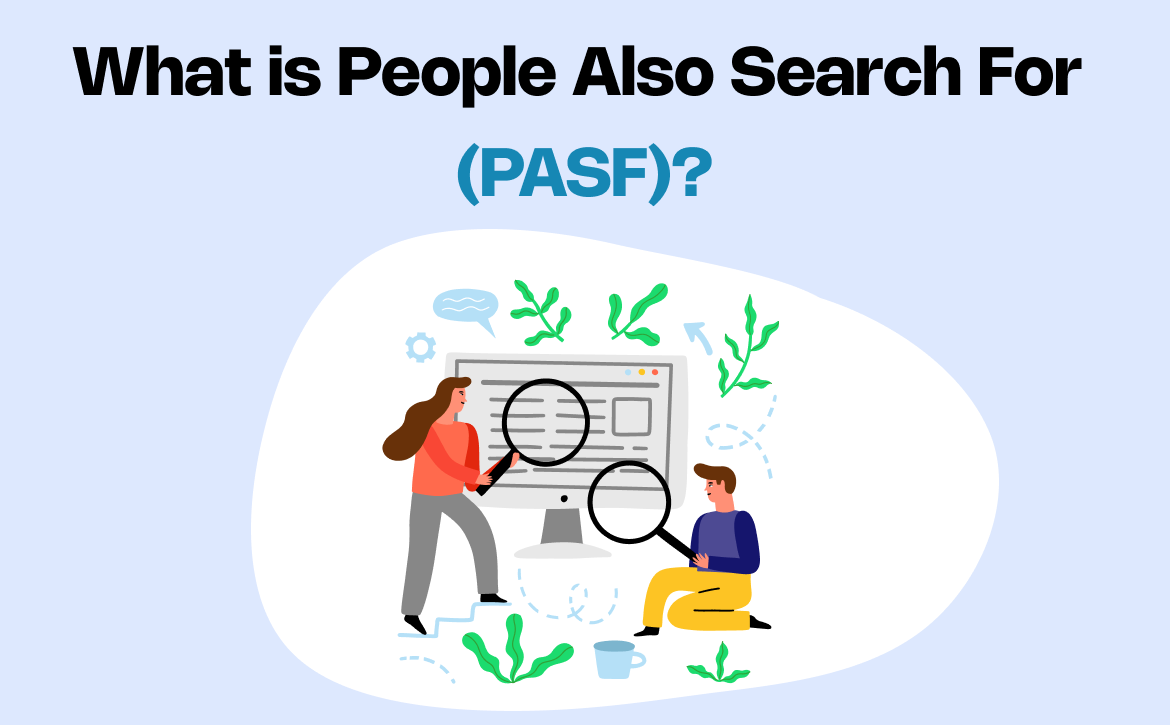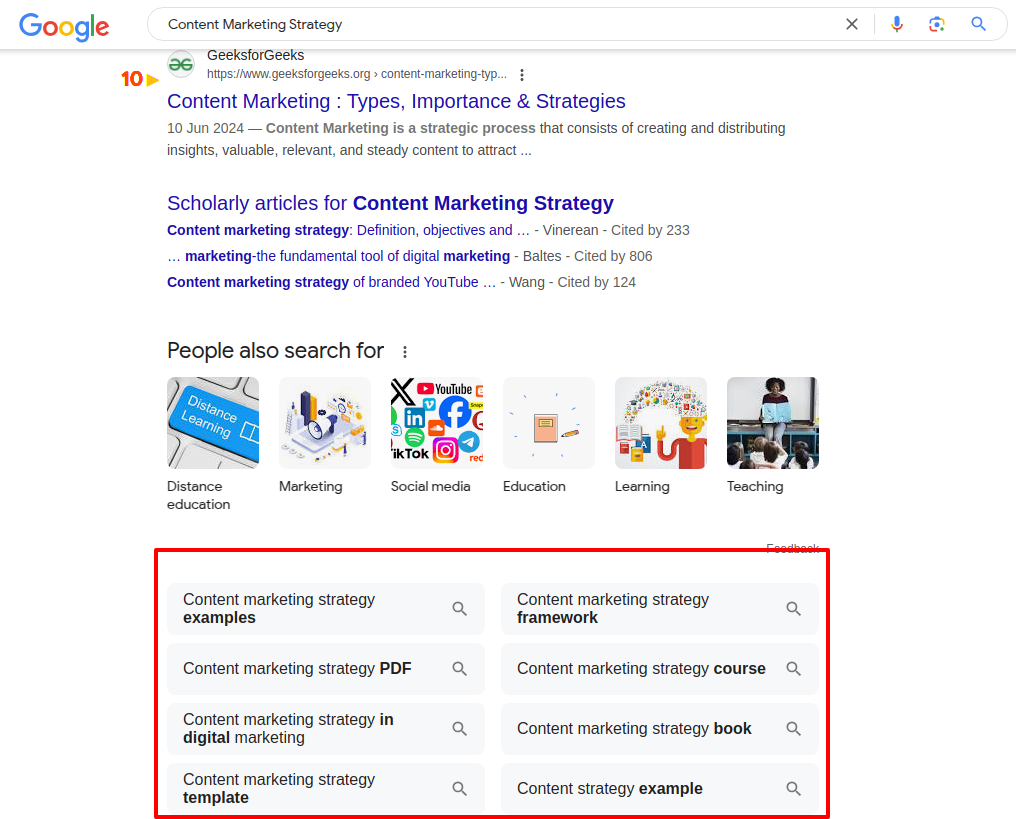Search Engine Optimization (SEO) can prove to be the real ace of spades in your online business endeavors.
Whether you want to attract customers, sell your products, or strike a business deal with another client, SEO and People Also Search For (PASF) can put you at the forefront of your competition every time.
As the largest and most widely used web browser, making your website/content Google-friendly is of utmost importance if you want to nail higher rankings every time a search is made in your line of expertise.
With the competition getting fiercer every day, Google has come a long way too in ranking the candidates based on various new and old factors.
From original ranking factors such as the loading speed, relevancy, and keyword optimization of your content to hidden features or patterns that may not be as clearly visible as the top few results, there is a long list of factors that help Google find the best relevant results.
Just like the visible ones, the hidden search patterns of Google also play a crucial role in helping you make the most out of your SEO initiates when a relevant search is made.
One such Google’s hidden ranking feature that makes your business more relevant is the “People Also Search For (PASF) ” feature that shows up on the search engine results page (SERP).
What is People Also Search For?
People Also Search For (PASF) is a Google SERP feature that displays related search terms based on user behavior. It appears after a user clicks a result, then returns to the search page — implying they didn’t find what they were looking for.
As an extra search and result feature, it usually appears on the right side of the SERP and brings up the most relevant and popular links related to your search input once you’ve returned to the main results page after clicking a link.
As such, the People also searh for feature becomes quite useful, especially when you didn’t find what you were looking for and hope to find an alternative solution.
Identifying your intent by assuming that you might have returned to the main results page because of not finding what you were looking for is the very basis of PASF that lets it produce better and more relevant results that you may not have considered upon your initial search.
Apart from the PASF feature, Google also has another SERP-related feature that shows relevant results or questions that people may have commonly asked about your search query called “People Also Ask (PAA),” which you should not confuse with the former. PAA is something that you can find right below the “featured snippets” or the topmost highlighted result.
Where it appears:
The "People Also Search For" (PASF) feature in Google Search appears in several locations on the search engine results page (SERP):
-
Below the Result You Clicked: After clicking on a search result and then returning to the SERP, PASF suggestions may appear beneath the previously clicked link, offering related search queries to refine your search. Marketer's Best Friend
-
On the Right Sidebar (Desktop): On desktop searches, PASF suggestions can appear in the right sidebar, often accompanying knowledge panels or other informational boxes, providing additional related topics or queries.
-
Below Rich Snippets or Knowledge Panels: PASF suggestions may also be displayed beneath rich snippets or knowledge panels, offering users alternative search queries related to the main topic.
Why People Also Search For Matters for SEO
People Also Search For (PASF) isn’t just a user-friendly feature—it’s a powerful SEO tool that helps you grow your visibility with minimal effort. Here's why it matters:
-
Real user behavior data from Google:
People Also Search For (PASF) is based on actual search patterns, making it a reliable way to understand what users are really looking for. -
Uncovers search intent pivots:
People Also Search For (PASF) suggestions often reveal how a user’s search journey shifts. This helps you create content that covers more user intents, not just one. -
Helps you rank for more keywords without extra effort:
By naturally including People Also Search For (PASF) terms in your content, you can rank for multiple related keywords—without doing heavy SEO lifting. -
Great for building long-tail traffic and content clusters:
People Also Search For (PASF) terms are often long-tail keywords. These help you create rich content clusters that improve internal linking, engagement, and authority.
Real Examples of People Also Search For in Action
When you search “Content Marketing Strategy” on Google, the People Also Search For (PASF) suggestions that appear include:
-
Content marketing strategy examples
-
Content marketing strategy PDF
-
Content marketing strategy in digital marketing
-
Content marketing strategy template
-
Content marketing strategy framework
-
Content marketing strategy course
-
Content marketing strategy book
-
Content strategy example
Each of these People Also Search For (PASF) suggestions reveals what users commonly explore next—giving you 8+ new content ideas that align with your core topic.
PASF vs. PAA
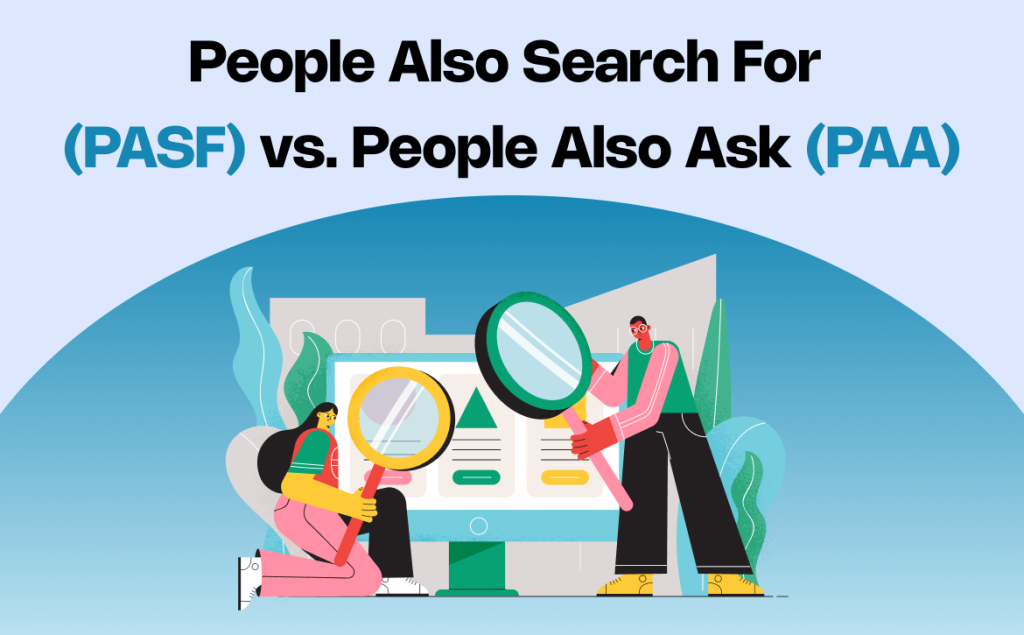
While People Also Search For (PASF) and PAA are both features related to SERP, meaning meant to provide related information to users, they differ in their purpose and how they provide the additional information.
For instance, PASF usually appears on the right side of the results page or below the results at the bottom of the page, especially after you have clicked on a link and returned to the Google SERP immediately.
PAA, on the other hand, appears within the results section right below the first or topmost result, which is often highlighted in the “featured snippets” box.
Similarly, while People Also Search For (PASF) provides additional suggestions based on the initial query by assuming you didn’t find what you were looking for, PAA aims to target your specific keyword by providing additional information through some of the most commonly asked questions related to your query. Hence, the name “People Also Ask!”
Moreover, PASF is based on your intent or interaction. Whereas PAA is strictly limited to your initial query, although with more questions and answers loading up as you go about reading them. The best part about PAA is that it does not need you to leave the results page while you go about exploring the additional questions.
However, PASF, as a user-intent-based approach, provides you with broader options and suggestions that you may not have thought of initially.
Turning the table, if you want your business or products to feature on the PASF, you will need to optimize your content with popular PASF keywords. Thanks to the Internet, there are tons of tools that you can use to target the right PASF keywords that are related to your niche.
Step-by-Step: How to Find People Also Search For Keywords
Want to discover what your audience is really searching for? Here’s how you can find People Also Search For (PASF) keywords easily:
Method 1: Manual (Free & Quick)
-
Search your primary keyword on Google
-
Click on any result
-
Then click the Back button
-
You’ll now see the People Also Search For (PASF) box right below the link you clicked
-
Note down the related keywords shown
This is a great way to find real, user-based keyword variations straight from Google.
Method 2: Use SEO Tools (Faster & Scalable)
-
What Is People Also Search For and How to Use It for SEO SuccessKeywords Everywhere – A browser plugin that shows People Also Search For (PASF) keywords directly in your search results.
-
Google Trends – Track how related search queries evolve over time.
-
Ahrefs / SEMrush – Advanced SEO tools that reveal People Also Search For (PASF) and similar keyword opportunities at scale.
💡 Pro Tip: Combine both methods—manual + tools—for the best keyword research results. It helps you catch hidden opportunities and build smarter content clusters.
Using People Also Search For in Content Strategy
People Also Search For (PASF) keywords aren't just suggestions—they're powerful content planning tools. Here’s how to use them, along with real examples:
Generate blog ideas
Get instant inspiration from real user searches. Each People Also Search For (PASF) term can spark a fresh article idea.
Example: Search term: “Content Marketing Strategy”
People Also Search For (PASF): “content marketing strategy examples”
Blog idea: “10 Real-Life Content Marketing Strategy Examples That Worked”
Create content clusters and internal links
Group related topics based on People Also Search For (PASF) suggestions and link them together. This boosts topical authority and keeps readers on your site longer.
Example:Search term: “SEO tools”
People Also Search For (PASF): “Google Search Console”, “Ahrefs”, “SEMrush”
Cluster idea:
-
Main pillar: “Best SEO Tools for 2025”
-
Subtopics: “Beginner’s Guide to Google Search Console”, “How to Use Ahrefs for Keyword Research”
Build FAQ sections
Turn People Also Search For (PASF) terms into common questions. Answer them clearly to improve SEO and user experience.
Example:
Search term: “Digital marketing”
People Also Search For (PASF): “What are digital marketing strategies?”
FAQ Entry:
Q: What are digital marketing strategies?
A: Digital marketing strategies include SEO, content marketing, email campaigns, and social media engagement.
Understand what your users are really thinking about
Each People Also Search For (PASF) keyword reflects real user curiosity. Use them to align your content with what your audience is actually searching for.
Example:
Search term: “Remote work”
People Also Search For (PASF): “remote work productivity”, “remote work burnout”
insight: Your audience may be struggling with focus and fatigue—ideal topics for blog posts, guides, or email series
How To Use PASF for Competitor Research
People Also Search For (PASF) keywords aren't just good for ideas—they’re also great for spotting content gaps your competitors missed.
Here’s how to use them smartly:
Step 1: Find People Also Search For (PASF) keywords
Search your main keyword on Google (e.g., “Email marketing strategy”).
Click a result → Hit back → You’ll see People Also Search For (PASF) suggestions like:
-
“email automation tools”
-
“email marketing examples”
-
“email marketing platforms”
Step 2: Google each People Also Search For (PASF) term
Check the top 3–5 ranking results. Ask:
-
What’s their content angle?
-
Is it in-depth or just surface-level?
-
Are they using visuals, tools, or templates?
Step 3: Create something better
Now build content that:
-
Goes deeper
-
Looks cleaner
-
Has a better user experience
-
Answers more questions
💡 Pro Tip: Track these PASF terms + competitor URLs in a sheet. Easy way to find repeat gaps—and consistently outdo them.
How To Track & Measure People Also Search For Performance
Creating content around People Also Search For keywords is just the start—tracking how it performs is where the growth happens.
Google Search Console
Go to the Performance tab and filter queries by your People Also Search For (PASF) terms. You’ll be able to see impressions, clicks, and average position to understand what’s gaining traction.
Ahrefs / SEMrush
Use Position Tracking to monitor rankings for each PASF keyword. Run a Content Gap Analysis to discover PASF terms your competitors rank for, but you haven’t targeted yet.
Google Analytics
Set up UTM tags or event goals for pages built around People Also Search For (PASF) keywords. This helps track user engagement and conversion beyond just traffic.
Tracking your PASF-based content lets you double down on what’s working—and refine what’s not.
People Also Search For SEO Optimization Checklist
Make sure your People Also Search For (PASF) keywords aren’t just found—they’re fully optimized. Use this quick checklist to boost visibility and performance:
Use People Also Search For (PASF) keywords in:
-
Titles, H1s, and meta descriptions
-
Internal links between related content
-
Blog sections, subheadings, and FAQs
-
Schema markup (especially
FAQPageandArticletypes)
Monitor performance monthly
-
Track impressions, clicks, and rankings using Google Search Console and SEO tools
-
Note which PASF keywords are gaining traction
Refresh PASF content regularly
-
Update with new stats, visuals, examples, or PASF keyword variations
-
Re-optimize based on content gaps or competitor updates
Keeping your People Also Search For (PASF) content fresh and strategic helps you stay ahead in the SERPs and build lasting traffic.
Tools to Discover People Also Search For Keywords
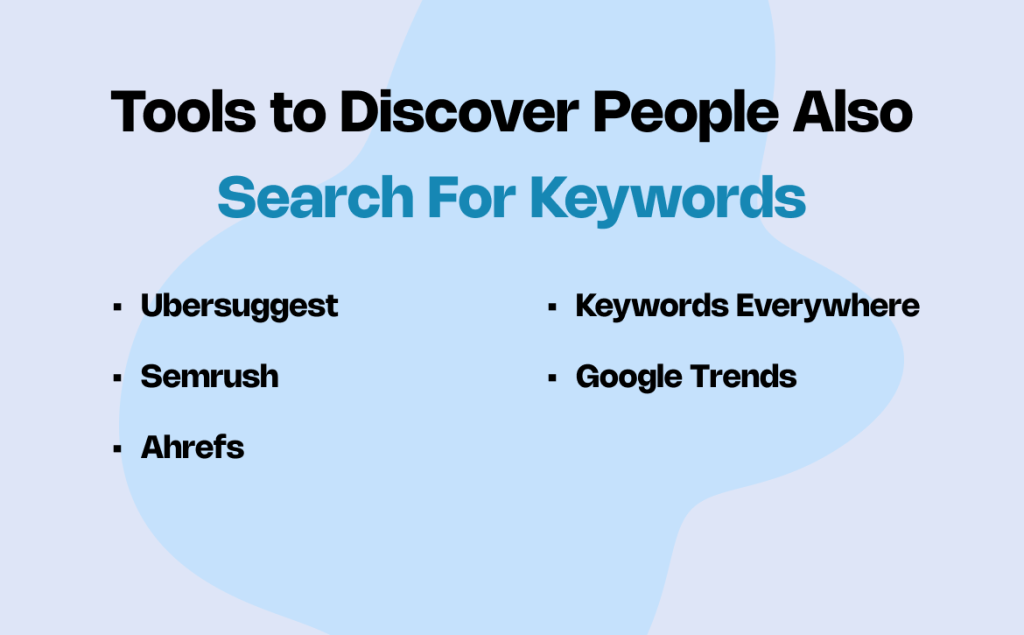
Since People Also Search For provides additional information based on the search behavior, including keywords in your content that are related to the original query and providing extra information based on the user’s secondary intent is quite important.
As we mentioned, PASF keywords are meant to show extra results to users right after they have returned to the search results page after carrying out their initial query.
To help you target the right PASF keywords in your business field, here are some of the popular tools that you can use:
|
Tool |
Key Features |
Pros |
Cons |
Best For |
|
Keywords Everywhere |
Browser extension (Chrome, Firefox) for trending keywords, search volume, and metrics |
Easy to use, provides data directly in browser search results, includes useful metrics |
Limited advanced features compared to full SEO tools |
Quick, on-the-go keyword insights |
|
Google Trends |
Tracks popular keywords by region and language |
Free to use, shows real-time trending keywords, region/language-based data |
Lacks detailed keyword performance metrics like search volume |
Identifying trending keywords |
|
Ubersuggest |
Keyword research tool with competitive analysis |
Provides insights into competitor keywords, offers SEO audit features |
May not be as detailed in analytics as some other premium tools |
Discovering competitor keywords |
|
Semrush |
Comprehensive SEO tool for finding organic keywords and competitive analysis |
Powerful tool for SEO, content marketing, and PPC, highly detailed keyword and competitor data |
expensive subscription, can be overwhelming for beginners |
In-depth SEO analysis |
|
Ahrefs |
All-in-one marketing tool for organic keyword analysis |
Excellent for backlink analysis, comprehensive keyword tracking, good for competitive research |
High cost, steep learning curve for beginners |
Advanced SEO professionals |
- Keywords Everywhere is an add-on/extension that you can use on Google Chrome and Firefox to obtain useful PASF data such as trending keywords, search volume, and other key performance metrics.
- Google Trends is yet another proprietary feature of Google that provides all the popular keywords in a particular region or language.
- Ubersuggest is a well-known and powerful keyword research tool that can help you discover the most profitable keywords used by your competitors.
- Semrush is a famous and renowned SEO tool that you can use to find organic keywords based on your content and discipline.
- Ahrefs is an all-in-one marketing tool that lets you find out the top organic keywords that your competitors are ranking for.
Besides these additional tools, the best way to find PASF keywords is the Google Search Console itself. That is, by searching a term or target keyword, clicking a result, and then returning to the search page, you can easily see all the suggested PASF results or keywords live.
Once you have all the trending keywords at your disposal, comes the part of embedding them into your content.
How to Optimize Content for People Also Search For in 2025

Optimizing your content for PASF is all about understanding the user’s intent and search behavior to maximize your visibility in organic search results.
Since Google prefers content that addresses a user’s query and provides relevant information based on that, it is important to have your content tailored to their needs, starting with targeting the right PASF keywords.
Apart from that, here’s what you can do:
- Make your content intent-based rather than keeping it limited to the trending keywords. In other words, since PASF shows results based on the search behavior of the user, it is important to understand the context of the search query and not just the words to provide better alternative results.
- Provide the information as comprehensively as you can to expand on the core topic for a broader range of suggestions.
- Align your on-page SEO elements, such as title tags, meta descriptions, and internal linking, with the right PASF keywords.
- Include long-tail formats and question-based keywords in your PASF SEO.
Last but not least, keep your content user-friendly and monitor your performance from time to time using SEO tools that are meant for tracking.
Case Study

As a useful and powerful feature, many businesses have started to leverage PASF to attract more organic traffic their way. And for all the good reasons.For instance, Backlinko, a famous SEO blog site run by Brian Dean, saw a significant rise of organic traffic of about 652% to his website in just 7 days by focusing on the user intent.
To bag such exponential growth, Dean started by determining the user intent and then proceeding to satisfy it with all the SEO techniques at his disposal, including PASF keyword research.
Therefore, the crux of the matter is that once you figure out the context of the query, it becomes easy to optimize your content for more subtopics and keywords.
Likewise, there are many other examples of case studies that highlight the importance of PASF optimization that you can find.
Mobile-First Optimization Using People Also Search For
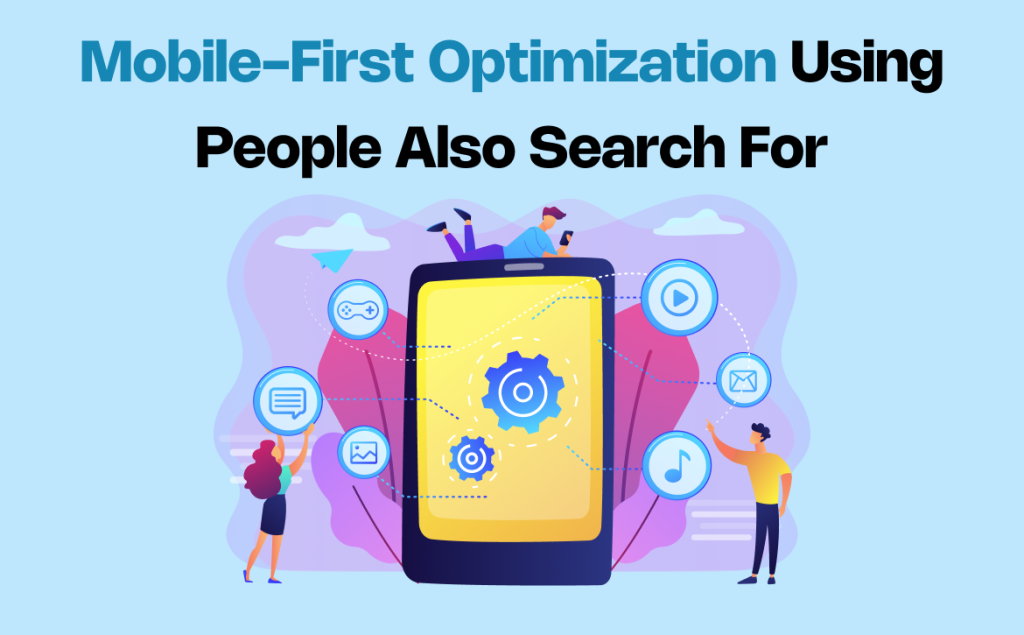
While PASF plays a major role in optimizing your content for better user experience (UX), keeping it mobile-friendly is also quite crucial given the majority of users are mobile users.
Besides, Google itself prioritizes content that is compatible with mobile phones in its mobile-first indexing protocol.
In either case, to effectively implement mobile-first optimization using PASF, you need to:
- Get familiar with the intent of mobile users.
- Optimize for smaller screens and fast loading speed.
- Use mobile-friendly responsive designs in your PASF-friendly website.
- Organize your content for mobile users.
- Integrate a voice search feature.
- Target local search.
- Improve internal linking for PASF-related queries.
- Showcase mobile-specific CTAs to entice users to click without having to scroll.
All in all, by optimizing your content with proper PASF keywords combined with mobile-first optimization, you can be in a far better place to be featured on the PASF section as soon as a relevant search is made.
Along with mobile optimization, integrating your website or e-commerce store with advanced technologies such as AI and machine learning can go a long way in building the much-needed connection between your content and the trending PASF keywords.
The Role of AI in PASF Keyword Discovery

By leveraging AI into your SEO efforts, you can gain meaningful insights into what customers may want depending on their initial query.
Known for their superior data analysis, AI algorithms can help you predict the right PASF keywords in no time.
With intelligent pattern learning, it can better understand the user intent or the context of the query to provide better alternatives relevant to the search.
Better known as Natural Language Processing (NLP), it is the AI’s way of understanding the context and finding relationships between different keywords.
Apart from that, it has many predictive qualities, such as predictive search behavior analysis, which allows it to predict future search trends based on the search query and user behaviour.
At the same time, you can always use the power of AI to automate many of the tasks, including keyword research, content creation, and data analysis.
Conclusion
Despite being a relatively new feature, Google’s People also search For is already on the path to changing the way it used to crawl the Internet and index the search results.
also search
Instead of strictly revolving around the keywords, PASF lets Google understand the context first and then provide additional information apart from the relevant results, especially when you have clicked on a result and returned to the initial search results page without finding what you were looking for.
As an intent-based feature, including PASF in your search engine optimization strategy can significantly improve the chances of your content and products being featured on the said section, along with higher rankings.
All you have to do is find the right target keywords, especially trending PASF keywords that go beyond the traditional keyword research and involve contextual understanding.
Once you have the keywords, you can easily create PASF-friendly content to entice more organic traffic.
Speaking of it, don’t forget to optimize your content and webpages for mobile users, as they are your biggest audience on any given day.
And lastly, keep monitoring your performance regularly to further optimize your content for PASF and to stay up to date with trending keywords.
